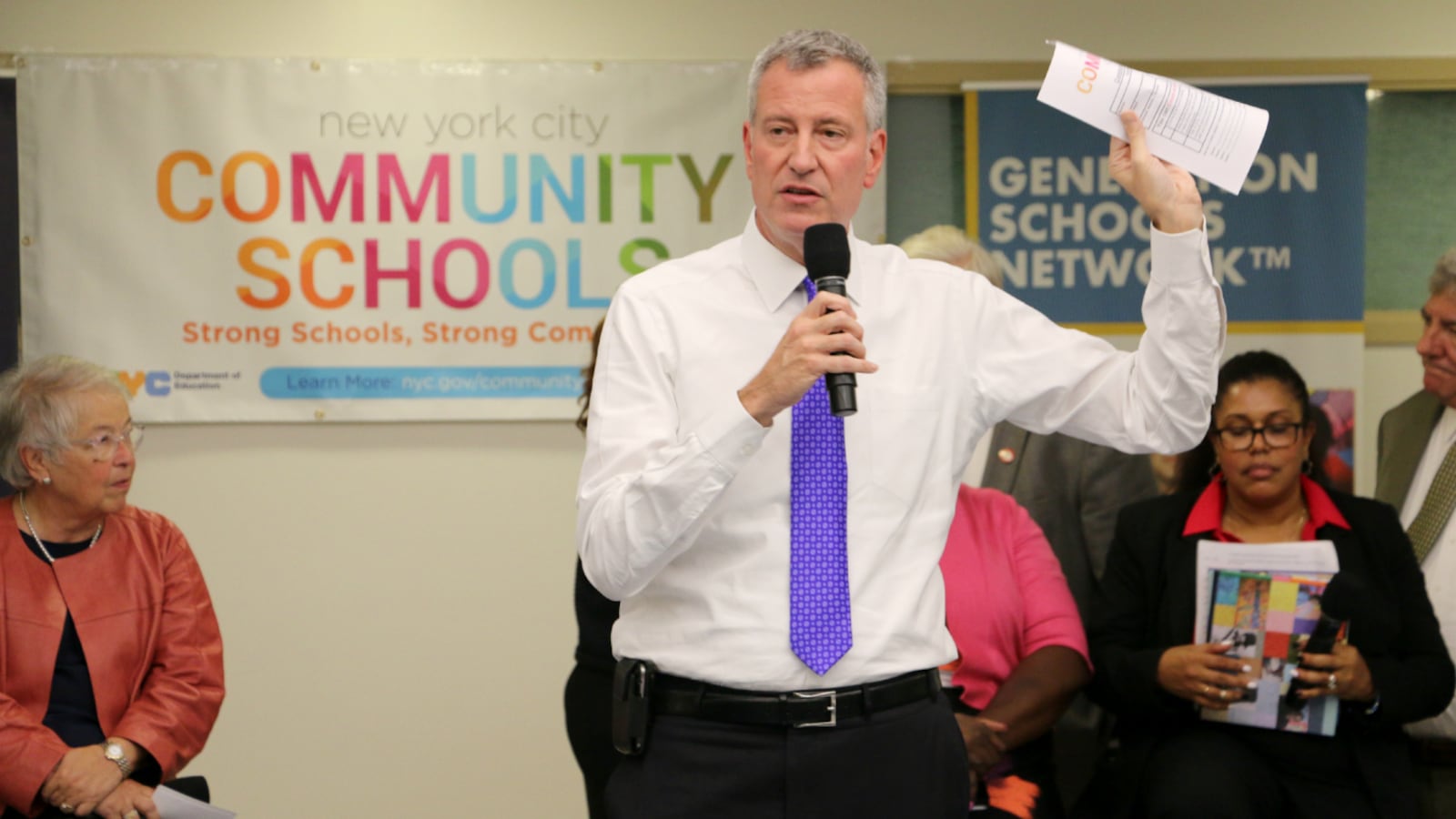After over four years and almost $800 million, city officials are winding down the Renewal turnaround program, one of Mayor Bill de Blasio’s highest-profile education initiatives.
The city released a report Tuesday that reads as a post-mortem on the program for low-performing schools, describing what officials see as the program’s biggest strengths and weaknesses since it launched in 2014.
“One of the most significant findings of the Renewal program is the importance of a strong principal,” the report notes, a theme that recurs several times throughout the 16-page report. In the first three years of the program, more than half of Renewal principals had quit or been replaced.
The program launched with 94 schools. Fourteen have been closed, nine have left the program after being merged with other schools, and city officials said 21 have shown sufficient progress to slowly ease out of the program.
As Chalkbeat first reported, the remaining 50 Renewal schools will stay open for now and some of the core elements of the Renewal program will remain to support them.
The report also touches on a number of shortcomings: “An organizational structure that sometimes left principals confused about lines of authority and sources of guidance, including an overly ‘one-size-fits-all’ approach. Not moving quickly and systematically enough to ensure the right principal was at every school. Stigmatization in some schools associated with the Renewal designation.”
De Blasio initially promised the program would show “fast and intense” improvements within three years, a promise that the program did not live up to. In an interview with the New York Times, the mayor seemed to acknowledge some of the program’s flaws.
“I’m at peace that with the information we had and the structure we had at the time, it was a sensible approach,” he said. But he also added: “I would not do it again that way.”
Still, the report also points to individual school success stories and some encouraging data including increases in student attendance and rising graduation rates.
You can read the full report here:

